Contact
Insight:
Delivery of sustainable irrigation using harvested stormwater and wicking bed technology to achieve green and resilient turf open space within the new Gladstone East Shores Precinct
Project description
The Gladstone East Shores Precinct is a major new recreational hub for the City of Gladstone located on the foreshore of Auckland Inlet. The integrated parkland design features an innovative application of ‘wicking bed’ technology to store locally harvested stormwater runoff for passive irrigation of a high use open lawn area.
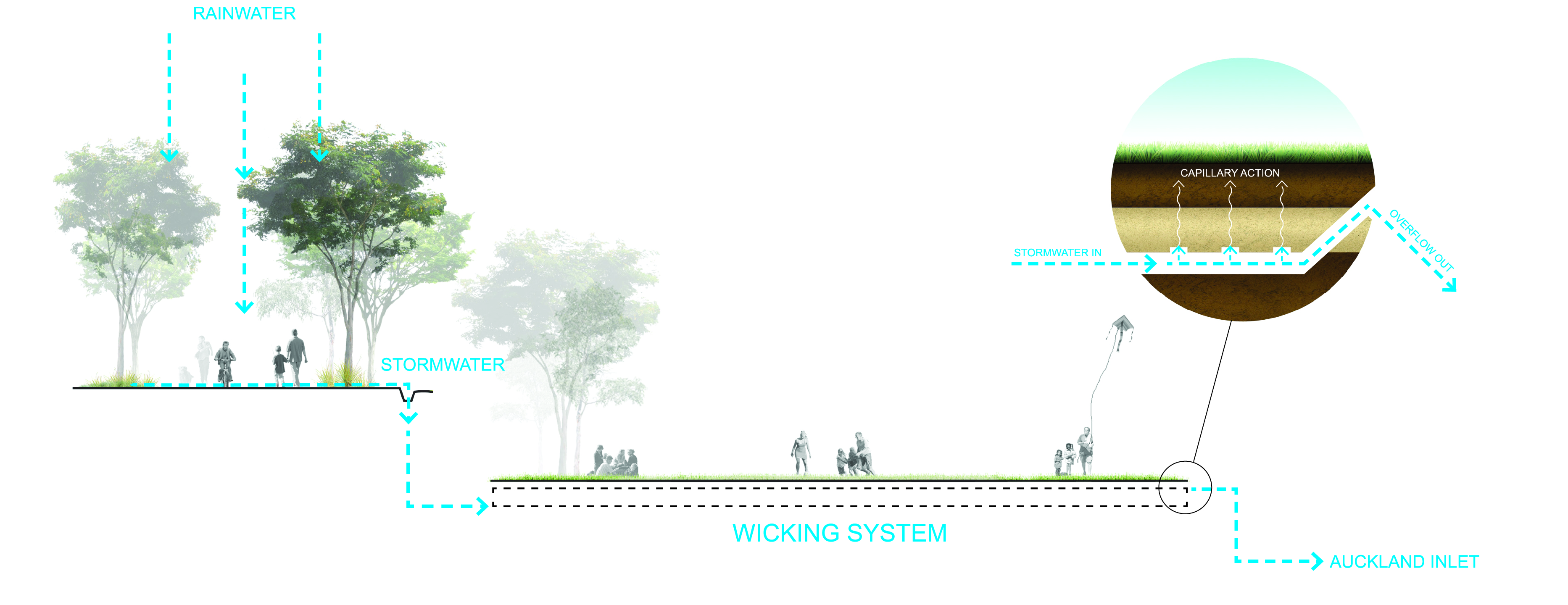
The drivers
Provision of a world-class waterfront recreational precinct that uses sustainable water management to help secure water supplies for high amenity green landscapes
- World-class parkland in a drying climate: The Gladstone climate and the existing soil profile required an innovative solution for supporting resilient green spaces, water management and irrigation for the parkland.
- Sustainable and healthy environment: The aim was to protect Auckland inlet from stormwater pollution and reduce reliance on potable water supplies.
The innovations
Harvesting, storage and reuse of stormwater to passively irrigate a high use turfed open space using wicking bed technology
- Shallow storage zone: Stormwater is diverted from the road and shelters into a storage zone (artificial sand aquifer) built beneath a 1420m2 turf kick and throw area.
- ‘Wicking-bed’ technology: Using the natural process of soil capillary rise, driven by evapotranspiration, the water stored in the storage zone is drawn up to the active root zone, thereby ensuring optimal soil moisture conditions for healthy turf growth. This soil profile also ensures the fields are able to drain effectively after rainfall for quick return to play.
- Passively irrigated and resilient green space: The storage zone and wicking bed provides the turf above with a reliable supply of water using a method that doesn’t require the use of energy (e.g. irrigation pumps). This solution also reduces stormwater pollutant loads entering Auckland Inlet by storing and using the stormwater for passive irrigation and thereby reducing the volume of stormwater leaving the site.
- Treatment of stormwater flows: Vegetated swales, bioretention raingardens, permeable pavers and rainwater tanks are also used across the site as part of the overall stormwater management strategy for the precinct.
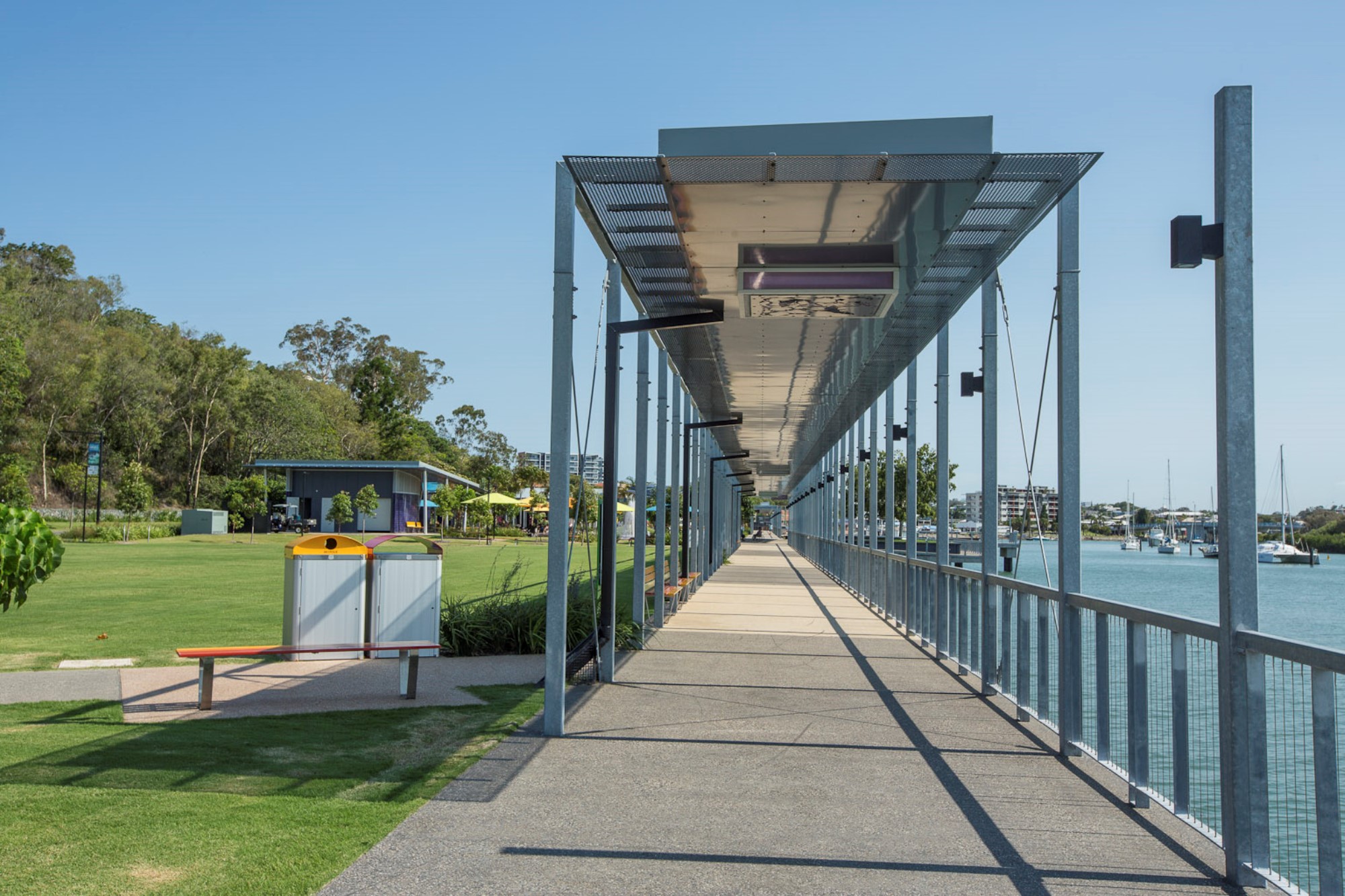
The lessons
- Results to date show success: Since its construction in 2014, the success of this project has demonstrated that wicking-bed technology is a viable solution for achieving healthy turf growth and integrated water management benefits.
- Site challenges can create opportunities: Poor soils, shallow rock and the need for fill on the site provided the opportunity to recreate the soil profile in a new and functional way.
- Stormwater can be used as a resource: Stormwater quality outcomes can be achieved by using stormwater as a resource and don’t necessarily need to be achieved through traditional stormwater treatment devices.
- Community and stakeholder engagement helped greatly: Gladstone Ports Authority was closely consulted during the development of the strategy providing them with the confidence to move forward with applying a new and innovative approach. As part of the broader precinct design process, the people of Gladstone were consulted in stakeholder workshops, together with the Yacht Club, Central Queensland University, Council, the Maritime Society and the Indigenous community. The engaged, innovative and creative partnership resulted in a successful redevelopment of a degraded city/port site, taking into account physical and climatic challenges, and has generated a resurgence of community interaction and fun.
Transferability
‘Wicking bed’ technology is a highly transferable and scalable concept for the passive irrigation of sportsfields, high profile open space, podium planting, planter boxes and street trees. For large-scale sportsfield/open space application, the concept is most applicable on new sites or existing sites where the soil profile needs to be rebuilt since the wicking zone can be incorporated cost effectively. Retrofitting existing parks or sportsfields, where there aren’t other drivers for reconstruction, may be cost prohibitive due to the earthworks and infrastructure required to incorporate the water storage/wicking zone.
Project stats
Location
Gladstone, QLD, Australia
Participants
Awards
Planning Institute of Australia 2016 – National Award for Planning Excellence – Great Place Award
AILA 2015 – Award for Excellence in Urban Design
Parks and Leisure Australia Qld 2016 – Best Parks and Open Space – Development
Commendation, Minister’s Urban Design Awards
Additional information
Contact
The outcomes
 Cities providing ecosystem services
Cities providing ecosystem services

- Protection of Auckland inlet: Reducing pollutant loads into Auckland Inlet
- Resilient green spaces: Storing stormwater underground in the dry Gladstone climate reduces losses through evaporation and also provides a no-energy irrigation solution using wicking bed technology.
 Cities as water supply catchments
Cities as water supply catchments

- Stormwater harvesting as an alternative water supply: The passive irrigation with stormwater provides 70% of the fields’ irrigation demand, reducing both energy and potable water demands.
 Cities comprising water sensitive communities
Cities comprising water sensitive communities

- Engaged and supportive community: Stakeholder workshops were held between the public and multiple organisations which generated a resurgence of community interaction.
- Significant place-making infrastructure project: Collaborative design of the precinct has ensured the parklands integrate innovative water sensitive urban design infrastructure, integrated pedestrian and cycle connectivity within the CBD, sheltered open space areas, large scale public artworks and an interactive water play zone.
Business case
Costs
- $40 million precinct
- $200/m² for the turf open space with wicking zone (cost includes bulk earthworks, impervious liner, flow distribution and drainage system, sand wicking layer, topsoil, and turf)
Benefits
- Reduction in potable water use costs – no additional potable water has been required to date except for the surface application of fertilisers.
- Reduction in operational energy costs for irrigation pump operation.
- Yet to be confirmed/quantified – reduced fertiliser user; less wear and tear of turf; higher aesthetic quality of turf due to even growth and colour.
Interested in this solution?
We partner with small and large companies, government and industry in Australia and around the world.
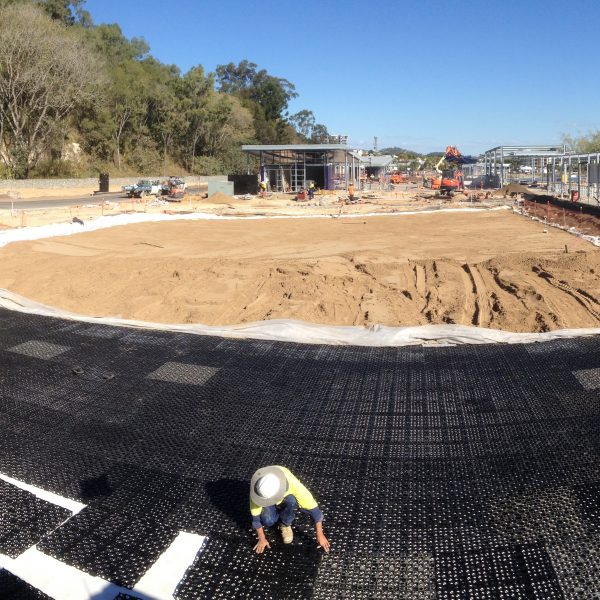
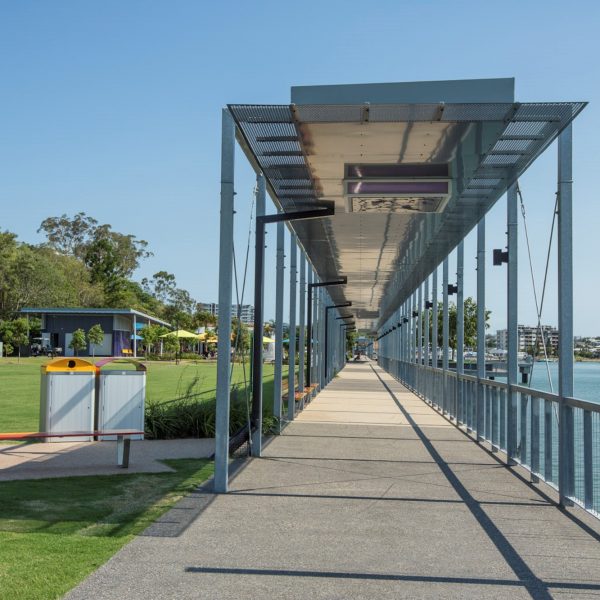
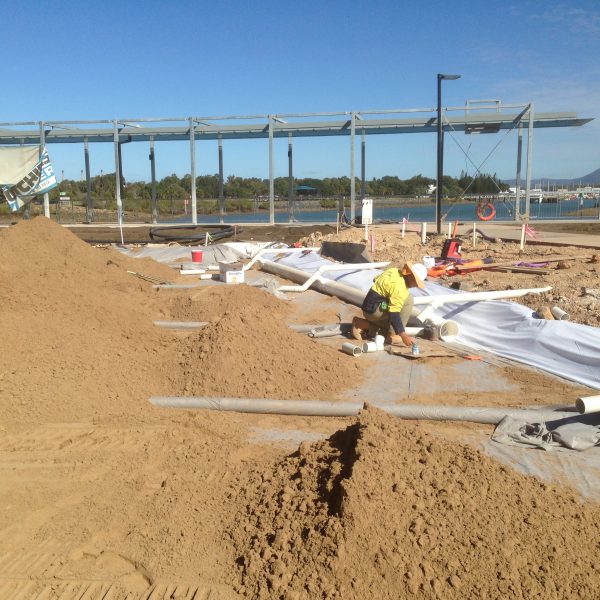
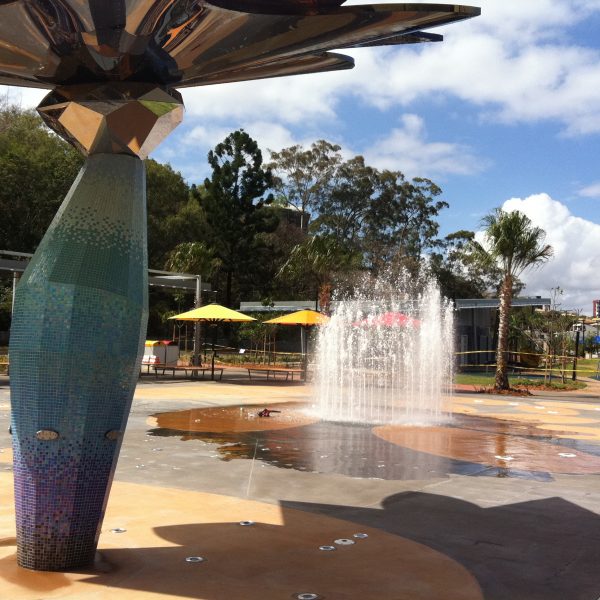
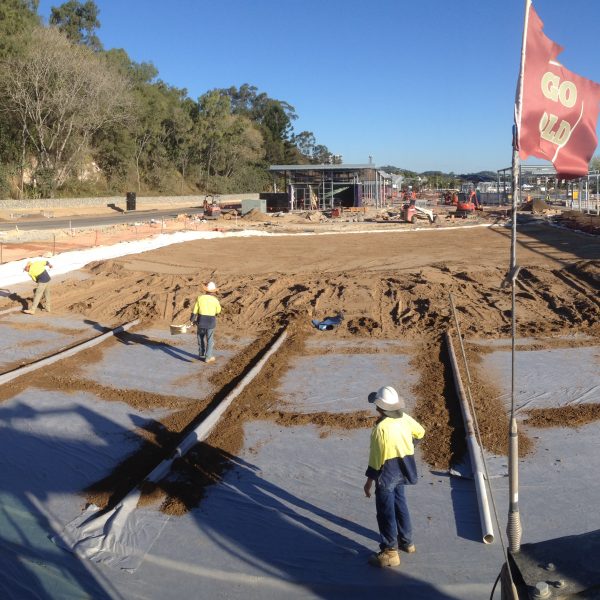
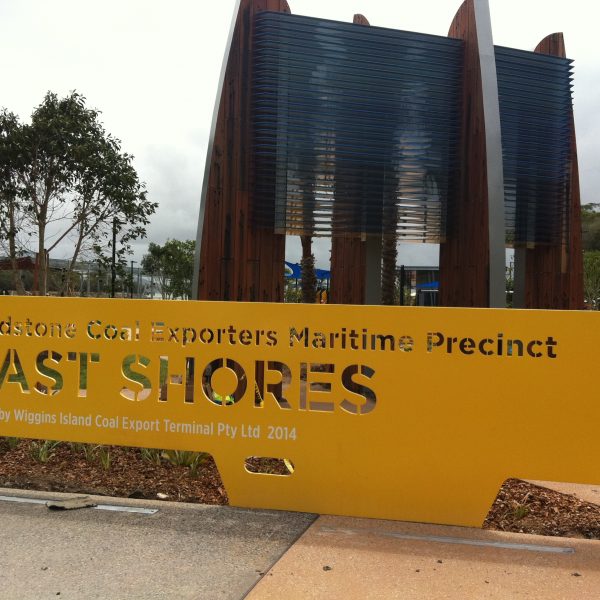
Comments